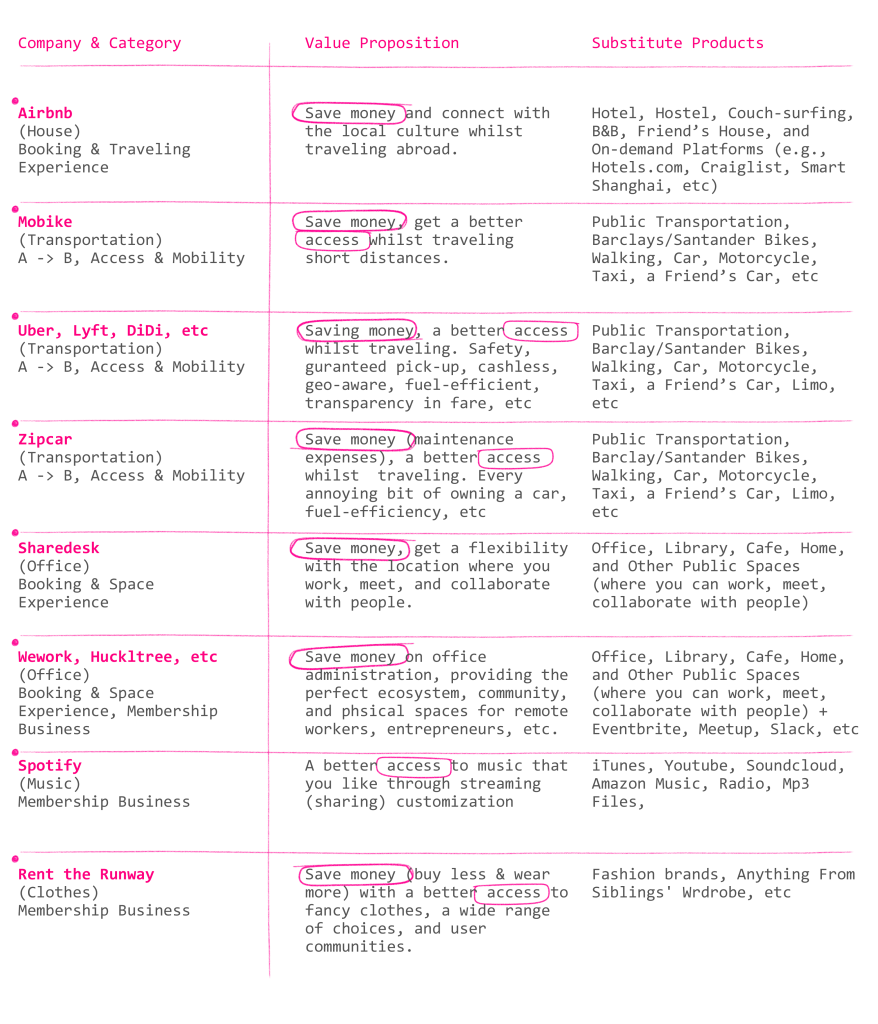
- March 31, 2017
Engage to Exchange (E2E) Part A – B
Contents — Keyword Extraction (Python), How-Might-We, Seed Question, Facts & Figures, Sharing vs On-Demand, Key Findings (Secondary Research), Fly-on-the-wall (Observation), Imagine-Like Prototyping, Key Findings (Ethnography), Late-Majority Adopters, Customer Profile & Value Map, Customer Value Chain, Competitive Analysis
1. Background
“Redesigning “Ownership” in the Sharing Economy”
Based on the business/startup idea I conceived back in late 2018, “Engage to Exchange (E2E)” is one of the self-directed research & strategy projects I’ve been working on. It is intended to redesign ‘ownership’ in the context of human desire in the Sharing Economy where the system encourages common-ownership of idle properties amongst unspecified individuals.
2. Scoping Activities
2-1. Keyword Extraction (*Python Programming)
To map out the scope and direction of initial exploration, I have extracted keyword data by word frequency from online reports about the Sharing Economy in both economic and political contexts.
- The Sharing Economy (Economic Context)
As has been noted on the bubble chart below, such keywords as *Gross Domestic Product (GDP), *Expenditures, *Economy, and *Spending per Usage are the major driving factors of the Sharing Economy. Non-finance related terms are relatively lacking, but include *participation, *wider range of choices, and *fairer access.
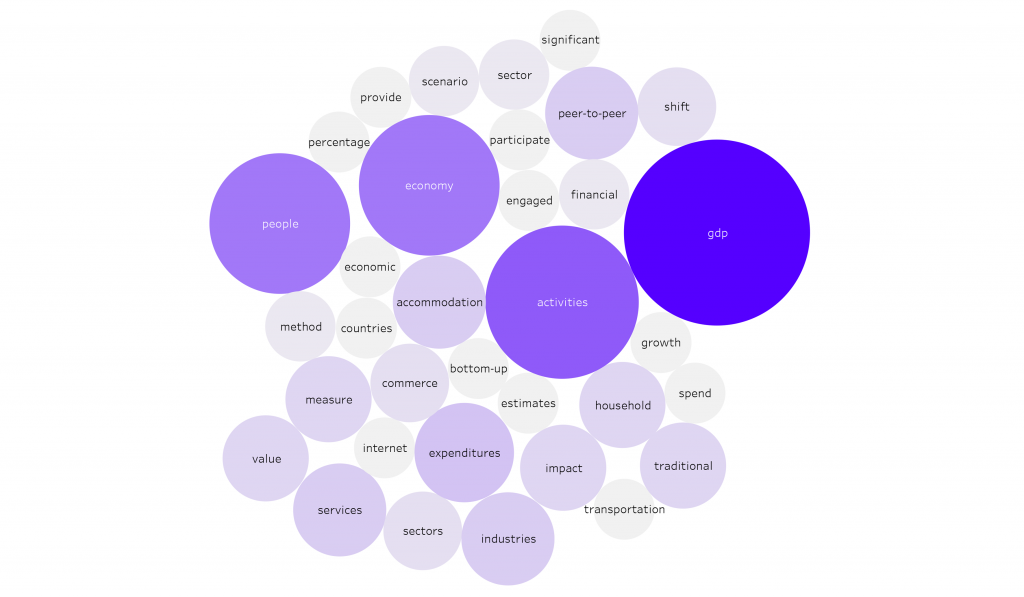
Fig. 1 — Keyword Data (Share Economy 2017, The New Business Model, PWC)
- Alternative Models of Ownership (Political Context)
As can be seen on the chart below, such keywords as *Automation, *Economic, *Cooperative, *Policy, *Necessary, and *Productivity are the major factors/metrics that describes ownership in a political context. Alternative models of private ownership has become on the horizon as the current economic system in Britain, has a number of structural flaws that undermine economic strength, democracy, and productivity, contributing to increasing levels of inequality and financial insecurity.
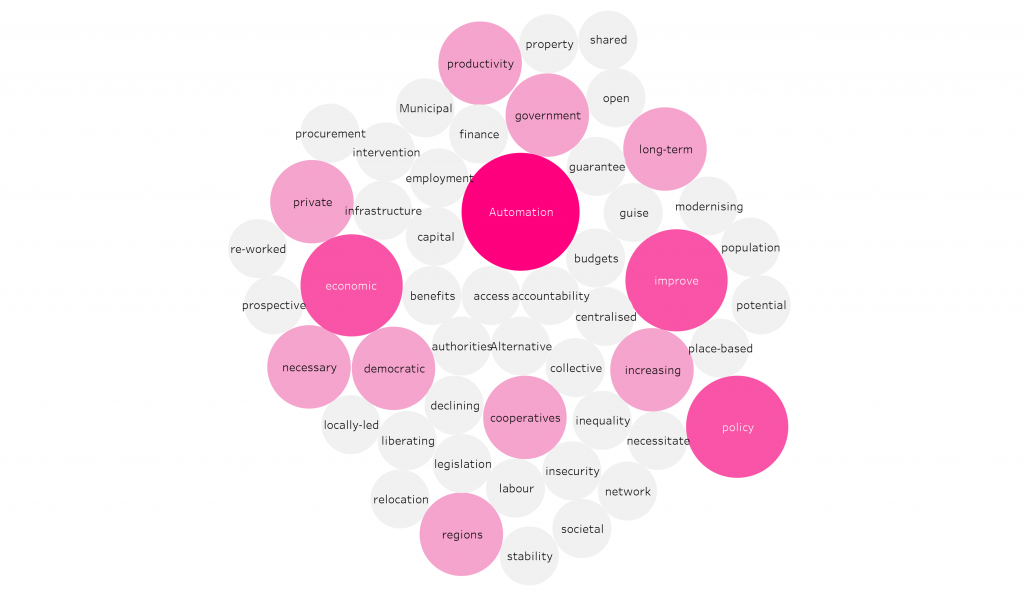
Fig. 2 — Keyword Data (Alternative Models of Ownership, The Labour Party)
3. Defining a Question
3-1. How-Might-We
To define a seed question of the project, I started with How-Might-We questions as an exploratory approach to outline my initial ideas. Along with a series of activities (listing – labeling – clustering), I’ve categorized the questions into four opportunity areas: *perception (perception change of sharing), *personalisation (customization & privacy), *sustainability, and *operations.
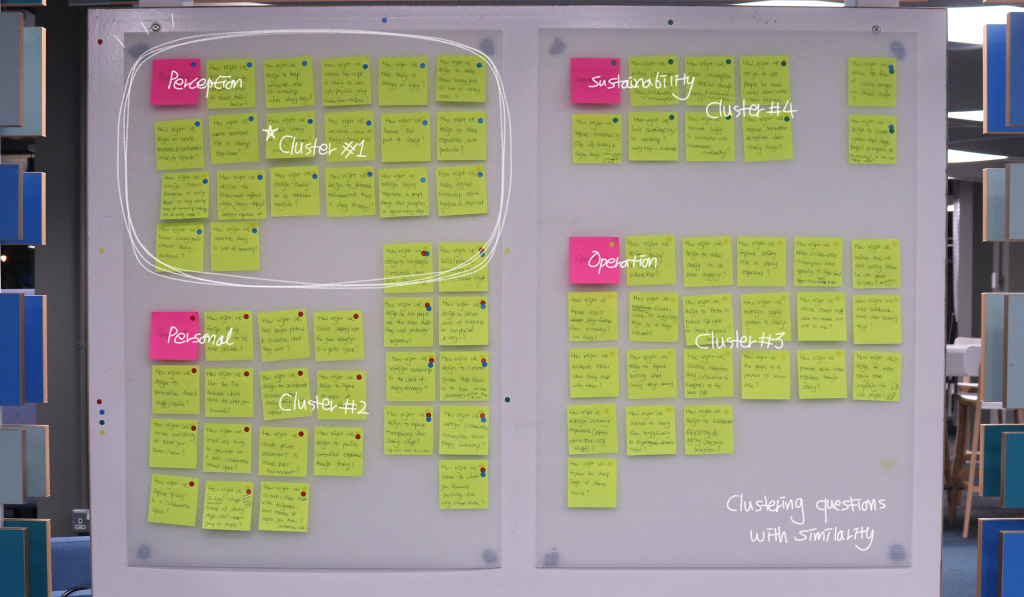
3-2. Seed Question (Opportunity)
Focusing on the “perception” side, a starting point of my research was behavioral and emotional factors of how we perceive ownership at a shared, open space. As I believe in the concept of the Sharing Economy and its potential to accelerate economic sustainability, my goal is to bring another aspect, ‘human’ to the table to achieve wider-spread adoption of the Sharing Economy, taking further steps from its inherent, original value: economic sustainability and financial benefit.
More information about the research is available at *my Medium blog.

4. Secondary Research
4-1. Facts & Figures (The Sharing Economy)
The term “Sharing Economy” began to appear in the early 2000s, as new business structures have emerged due to the 1) Great Recession, and an increasing sense of urgency around 2) global population growth and 3) resource depletion. That is to say, economic desperation has motivated the Sharing Economy. What’s being questioned is: is sharing truly what you want when you can afford what it takes to secure a better access?
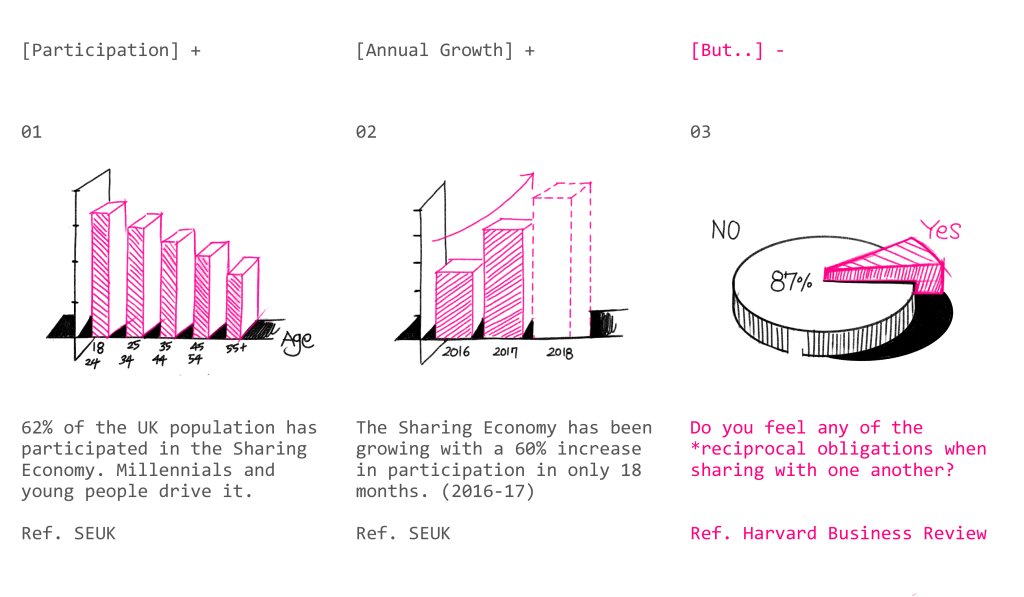

4-2. Sharing vs On-Demand
Today, the Sharing Economy, also known as collaborative consumption or peer economy has been market-mediated in the form of such on-demand or platform businesses as Mobike, Uber, Airbnb, Rent the Runway, WeWork, Sharedesk, etc as they all offer immediate access through controlled systems/services in unison. In fact, the Sharing Economy inherently aims to promote collaborative consumption, wider range of choices (consumer-driven), and reciprocal obligation.

4-3. *Key Findings
Since the Sharing Economy has its roots in economic desperation, economic sustainability is the key value that it’s meant to deliver/accelerate. What’s relatively lacking in today’s model of the Sharing Economy is:
1) consideration for human psychology: desire and social wants as in “emotional factors”, and the true, inherent value of the Sharing Economy: 2) collaborative consumption, wider range of choices (consumer-driven), reciprocal obligation, etc.
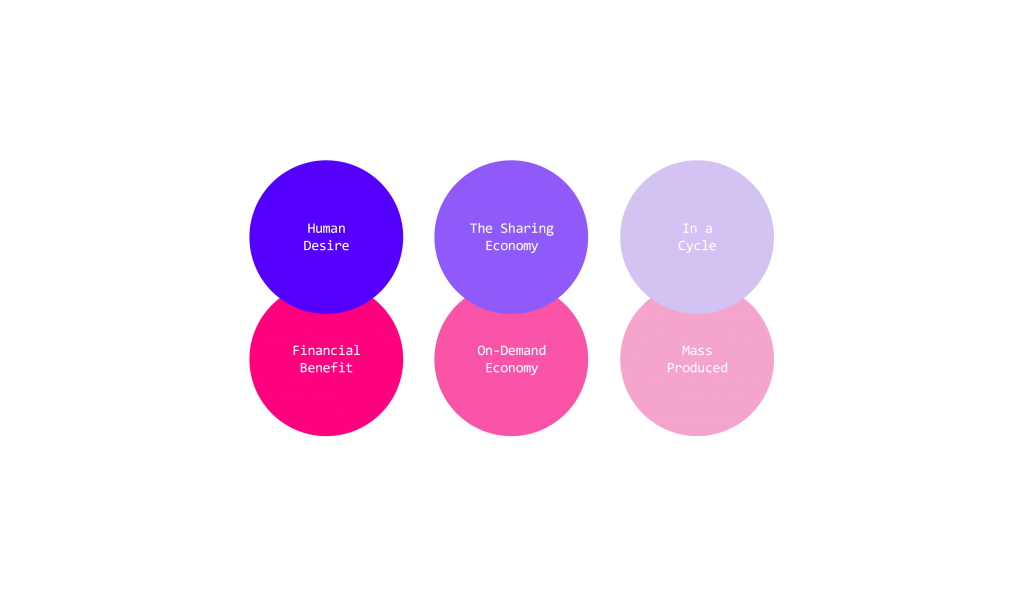
5. Experience Prototyping
5-1. Fly-on-the-wall (Observation)
I made an observation on a random group of people at a co-working space where system encourages collaboration + shared facilities. The point was to understand people’s underlying emotional factors of ownership, so the observation has been made without prior notice or education. (I chose the co-working space as it is the place where sharing and owning coexist.)
5-2. Imagine-Like Prototyping
I’ve also done imagine-like prototyping in a theatrical setting to observe a couple of interviewees and see how they perceive ownership over shared, physical objects at a shared, open, and collaborative space (co-working space). *The video is available 👉 here.
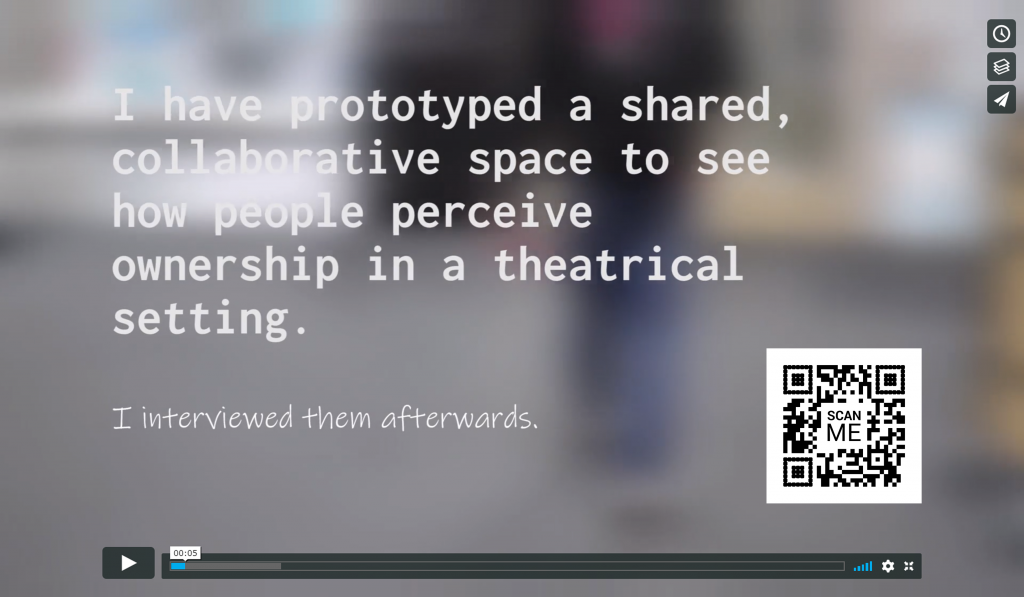
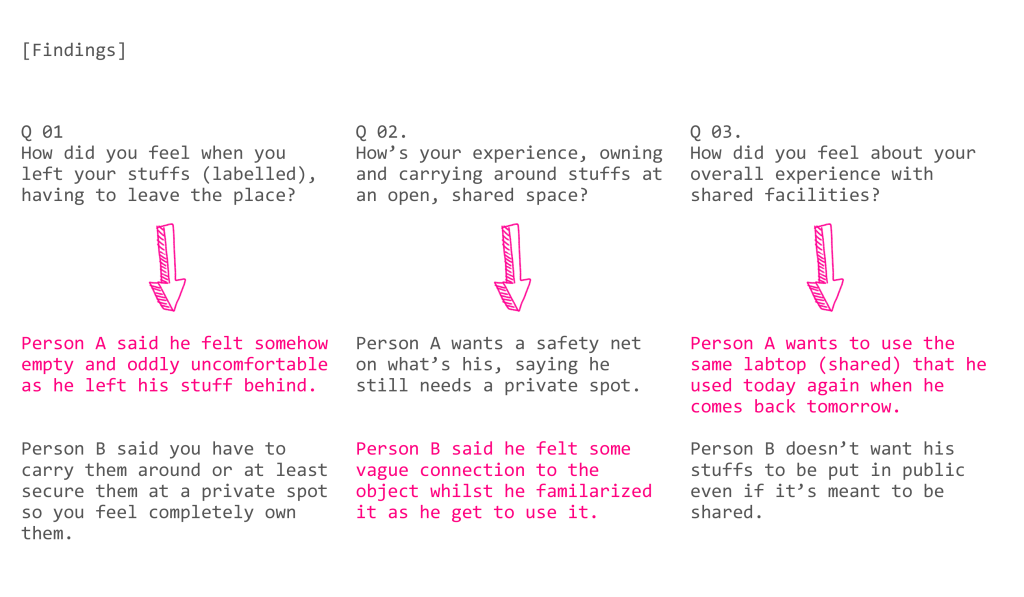
5-3. *Key Findings
“people tend to display such patterns of behavior as revisiting the spots where they used to sit on, using the laptop that they used in the recent past.”
- They often don’t mind traveling longer distances.
Through a series of observations, I’ve discovered that people tend to display such patterns of behavior as revisiting the spots where they used to sit on, used the laptop (shared) that they used in the recent past at a shared, open, collaborative space. It is interesting to see how quickly people develop a sense of attachment to physical objects in such short period of time, even though it is meant to be shared.

- The smaller the object is, the more quickly they develop a sense of attachment.
Another interesting take-away that I’ve discovered along the way was that the more handy the object is (or the easier to carry around), the more quickly people tend to develop a sense of attachment to it.
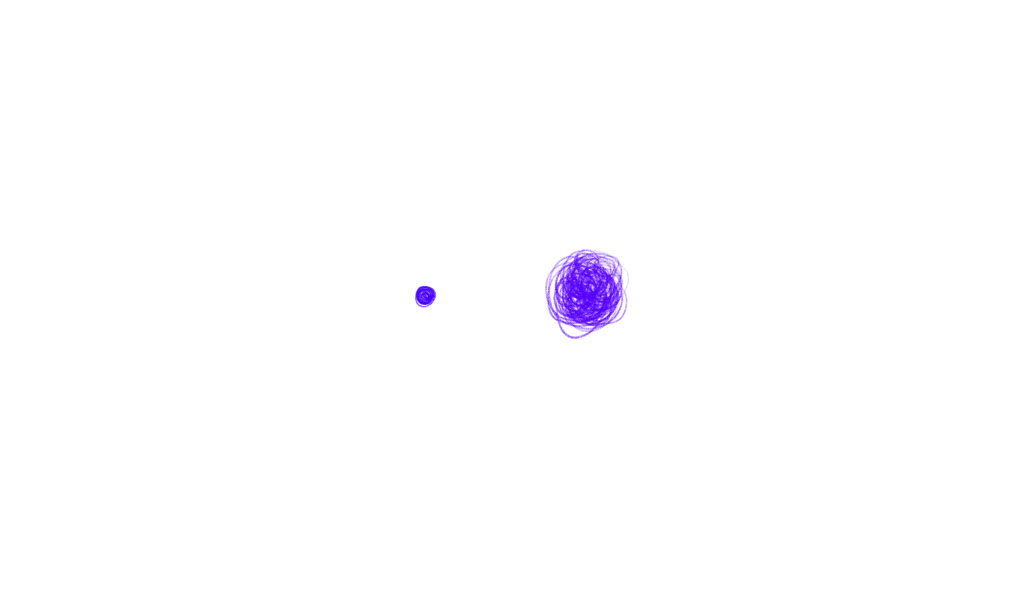
- Uniqueness matters.
Last of all, the more valuable as in expensive, original, and unique the object is/has turned out to be, the stronger their emotional attachment/ownership can be. They are also developed incrementally when the object carries some sentimental values, e.g. an engagement ring, birthday present, souvenir, keepsake, etc.

6. Appendix
6-1. Late-Majority Adopters
As introduced above, my goal in this project is to create value through a human-centred approach to achieve wider-spread adoption of the Sharing Economy. According to Gartner, The Sharing Economy has passed the growth phase of its maturity and is now heading to *trough of disillusionment. At this stage, it requires wider audience to join in so it stays relevant.
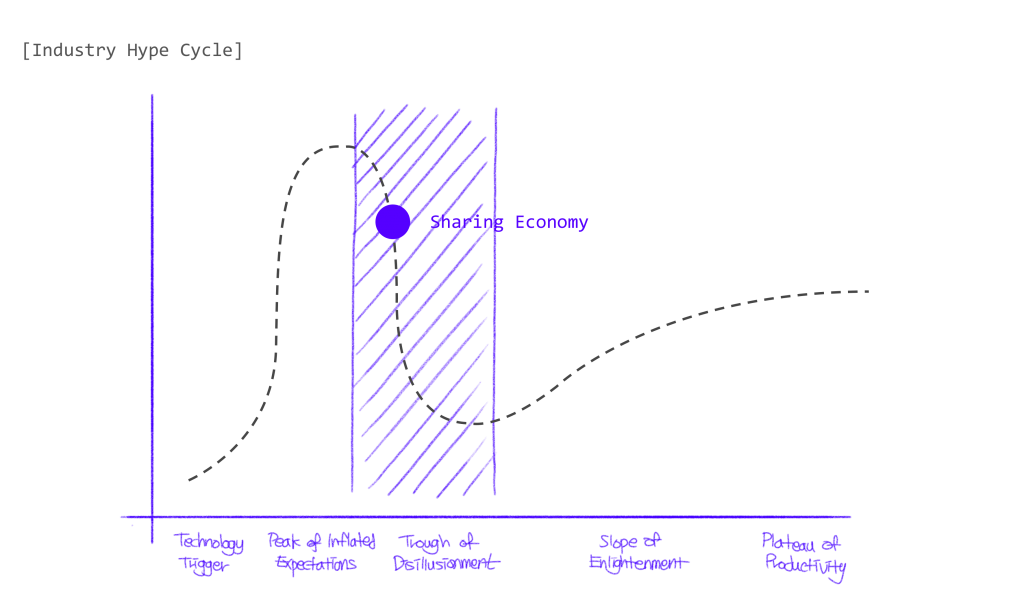
6-2. Customer (End User) Profile & Value Map
As part of initial practice, I have mapped out customer profile and value to comprehend their needs, frustrations, pains, etc. The customer here, is the end user of the service, i.e. residents and visitors at coworking spaces.
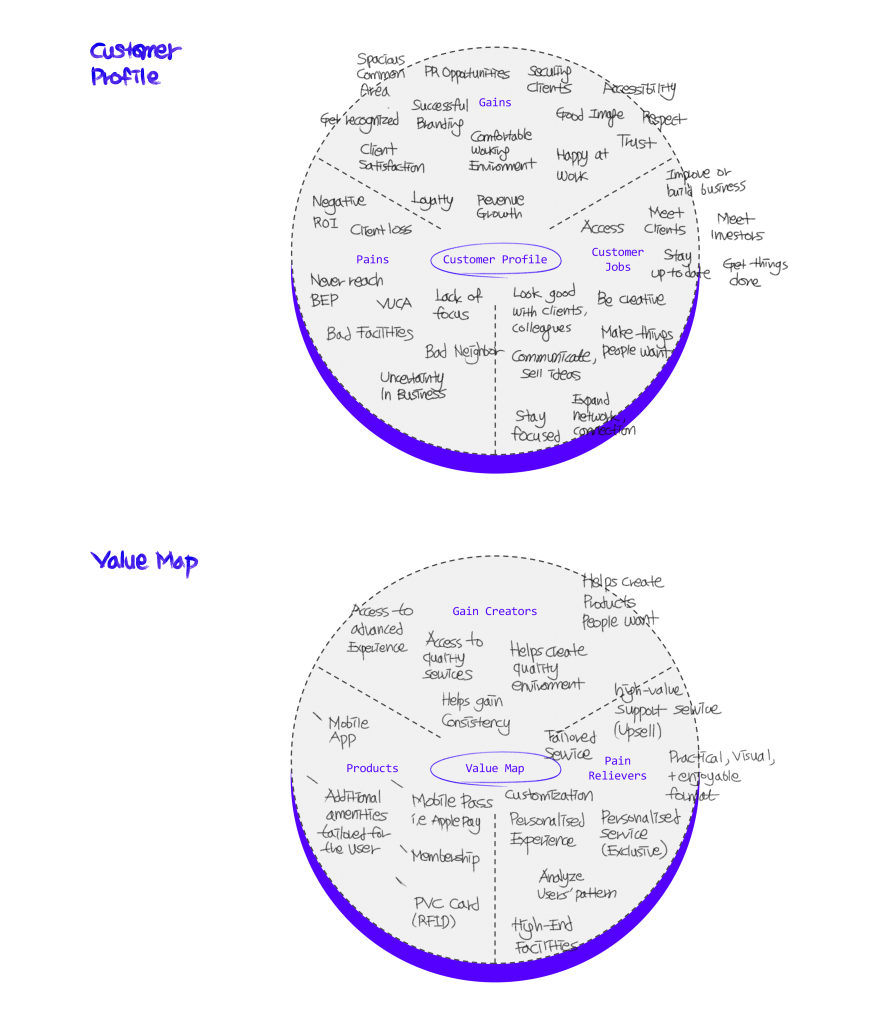
6-3. Customer (Coworking Spaces) Value Chain – *As Is
One of the most popular revenue streams for coworking spaces can be *membership business: membership fees, membership packages, and renting amenities and equipment. Whilst costs for coworking spaces are rental contracts, operational costs, office supplies, staff salaries, and so on.

6-4. Competitive Analysis (The Sharing Economy)
Other than facilitating quick/fairer access and financial benefits (for both parties: provider and consumer), the companies on the list below are not truly adopting inherent value of the Sharing Economy. What’s lacking here, is reciprocal obligation between service providers and users, and consideration for human desire.
